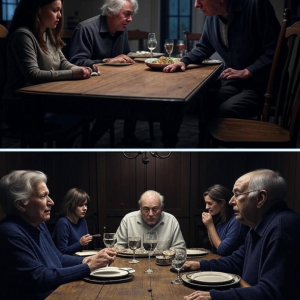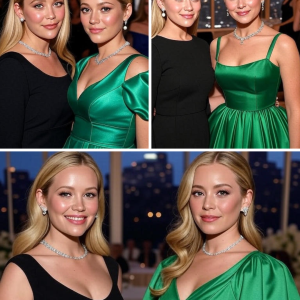What begins as a picturesque wedding in Napa Valley quickly unravels into a chilling tale of suspicion, dual identities, and well-masked deception in the story of Audrey and her brother Kyle’s whirlwind nuptials. Told through the observant eyes of Audrey, the narrative moves beyond flower arrangements and champagne breakfasts to reveal unsettling truths lurking beneath the surface of Madison—the bride everyone believed was perfect.
Audrey, 32, is not only Kyle’s sister but also his closest confidante. Her journey to Napa Valley alongside her husband Michael begins as an exciting celebration of her brother’s love. The venue is stunning, the family is glowing, and Madison—the bride—seems nothing short of enchanting.
With her poise, grace, and social finesse, Madison wins over Audrey’s parents and impresses the wedding guests. However, beneath the charm and radiant smiles, something doesn’t feel quite right. It is Audrey’s and later Michael’s growing unease that peels back the layers of Madison’s carefully constructed persona.
Madison’s dual nature first reveals itself in subtle inconsistencies. Audrey notices her holding different phones with different cases on separate occasions, having contradictory explanations about her background, and behaving with a level of control that borders on manipulative. One moment Madison is calling someone “sweetie” in a hushed, urgent phone call about financial accounts and timelines; the next, she’s brushing it off as a conversation with her wedding planner—who Audrey knows is a man named Jeffrey.
These red flags begin to converge. Audrey notices Madison constantly stepping away to take calls, overhears cryptic conversations, and even spots moments of suppressed anger and dominance cloaked under genteel civility. What amplifies the concern is Madison’s dishonesty about her educational background. When Audrey mentions Madison’s supposed MBA from Stanford, her own maid of honor—Madison’s cousin—confusedly insists that Madison attended UCLA. This inconsistency, paired with Madison’s icy interruption, sends a clear message: questions will not be tolerated.
Madison’s charm is revealed not as sincerity, but as a tool of control. She masterfully navigates social spaces, uses flattery to disarm others, and subtly manipulates those around her. Her compliments are laced with judgment, her requests carry the weight of commands, and even her interactions with professionals, like the hairstylist or planner, are managed with calculated dominance.
But the most revealing moment comes not from Audrey’s own discoveries, but from Michael’s blunt confrontation at brunch on the third day. He sees through the façade and warns Audrey: something is deeply wrong. He asks the question that ultimately reframes the entire weekend: “You really didn’t notice?” What follows is not just about a woman with multiple phones or a faked résumé—it’s the realization that Madison’s presence, her identity, and possibly her motives are not what they seemed.
Audrey’s story becomes one of awakening—not only to the truth about Madison but also to the importance of trusting one’s instincts, even when those instincts contradict the surface-level joy of a family celebration. The wedding, meant to symbolize love and union, becomes instead a mirror reflecting deeper concerns about trust, identity, and manipulation. In the end, the illusion of perfection shatters, and Audrey is left questioning not just who Madison is—but what Kyle might have unknowingly signed up for.
This narrative underscores a vital truth: appearances can deceive, charm can manipulate, and sometimes the most dangerous lies are hidden behind the most beautiful smiles. As Audrey’s journey illustrates, what you don’t see can be far more dangerous than what’s right in front of you.





